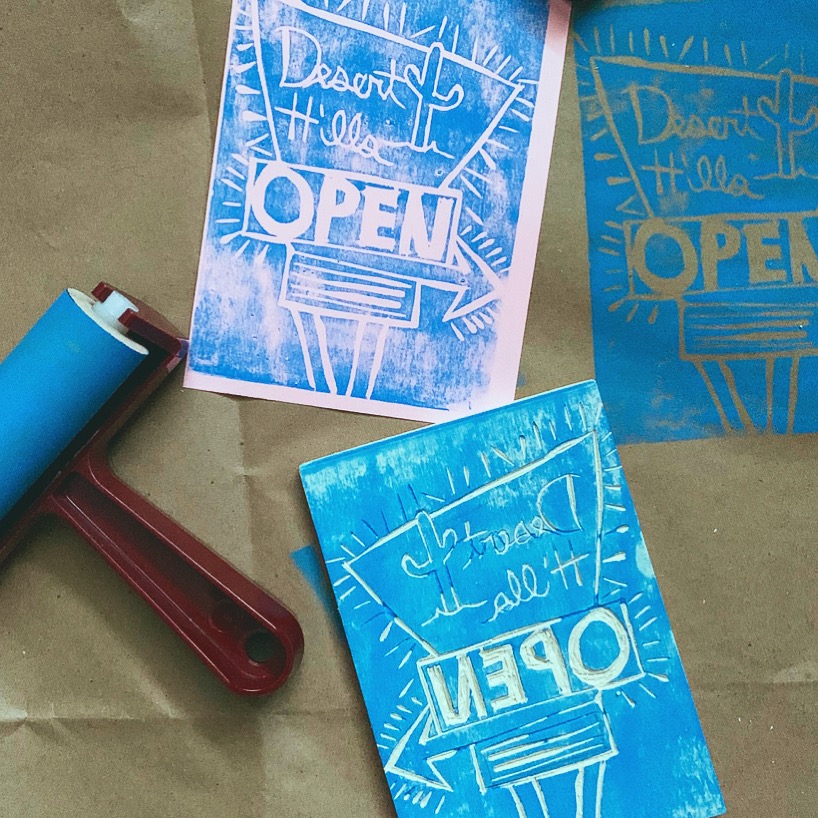Colorado’s Saving Places conference was a wonderful way to launch 2019! With over 800-people in attendance, Saving Places is one of the largest statewide historic preservation conferences in the country. The conference attracts attendees from all over Colorado and America; there were 19-states represented this year.
It was my pleasure to present “Junior Citizens: Creatively Connecting Children to Community” during the Saving Places conference! Delving into the strategies to develop programming for K-12 audiences, I decided to make this presentation… interactive! Ambassadors from the Preserve America Youth Summit helped break-out groups brainstorm one initiative that their respective organizations could launch within the next year to reach youth.
A block print I made inspired by the Desert Hills motel in Tulsa, Oklahoma
After flexing our mental muscles, presentation attendees participated in a mini-workshop on creating preservation inspired prints. Attendees had the opportunity to learn a traditional print making technique and create a preservation themed piece, such as the neon sign in the photograph. One participant reached out to me via Instagram and said “ Your presentation was fabulous, I learned so much! I have my breezeway blocks and Desert Hotel prints hanging over my desk to remind me to make history fun!”
The conference not only presented the opportunity for me to help people think of preservation education from a different perspective, but for me to deepen my knowledge of false historical narratives. “New Threats to Cultural Resources: The Case of Ute Prayer Trees in Colorado and Disrespect to Native Cultures” was a profoundly educational and thought provoking session.
Presenters delved into: how to discern human impact on trees, natural causes to distort tree growth and cause unusual shapes, and strategies to communicate with tribal members/tribal government to learn cultural traditions. Contrary to internet lore and inaccurate interpretive signage, the Ute tribe do not ascribe to the belief that the bent trees in Colorado are prayer trees. In addition to cultural memory, foresters are able to accurately date trees and provide irrefutable scientific evidence that the “Ute prayer trees” are too young to be part of early tribal cultural practices. To fight against false historical narratives tribal leaders from different bands of Ute have been working on public statements, which will be published in 2019. It is difficult to refute a false narrative once it has generated steam, but this session provided a wealth of information on how to thoughtfully investigate the authenticity of cultural resources and partner with tribal members/government to be advocates for the past.
Attending Saving Places was a wonderful opportunity to better understand Colorado’s rich history, learn new preservation techniques, and discuss the importance of connecting the past to K-12 audiences. Reach out to me via me@sarahmarsom.com to discuss outreach strategies for your organization or a potential speaking engagement.


